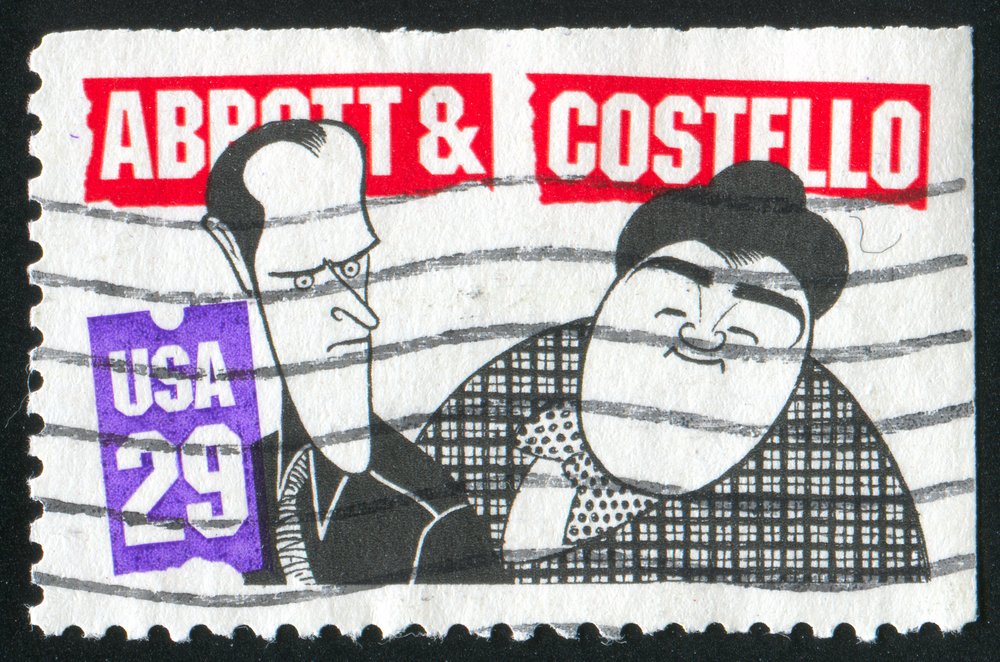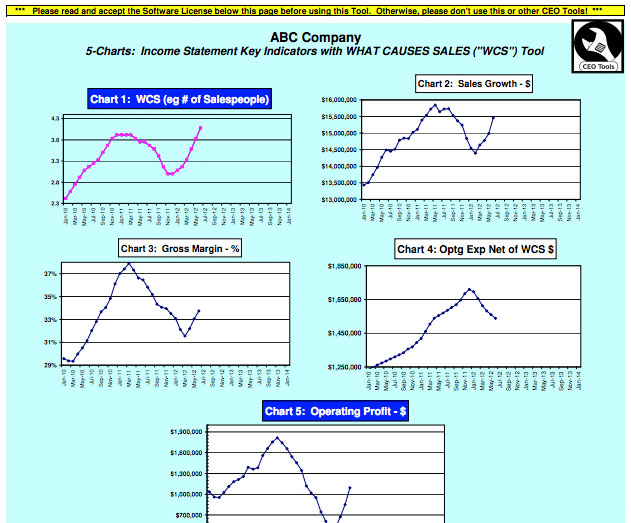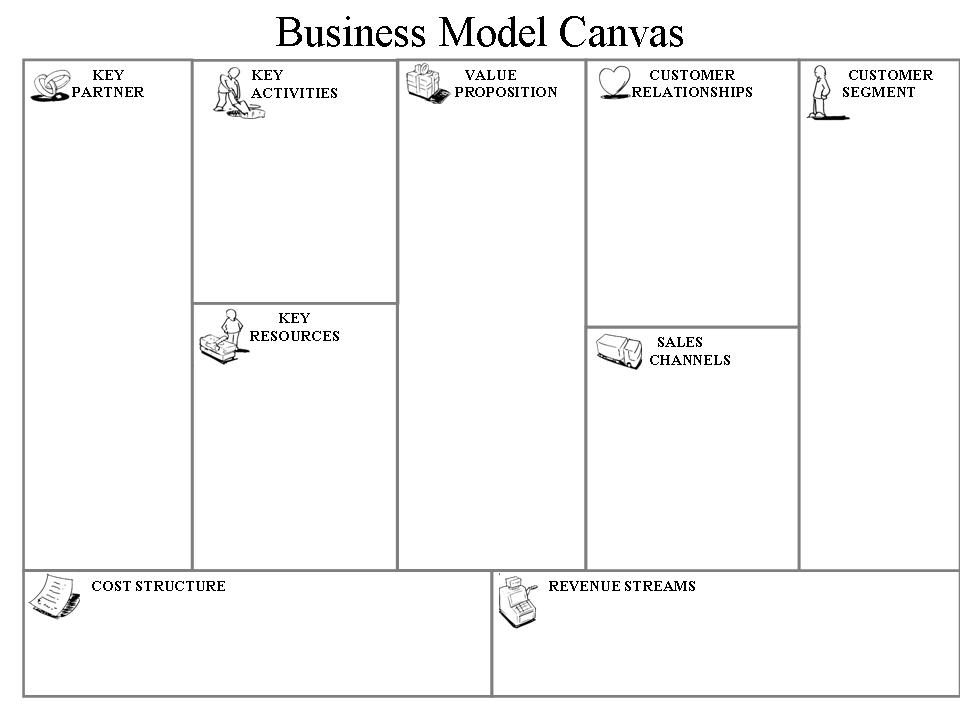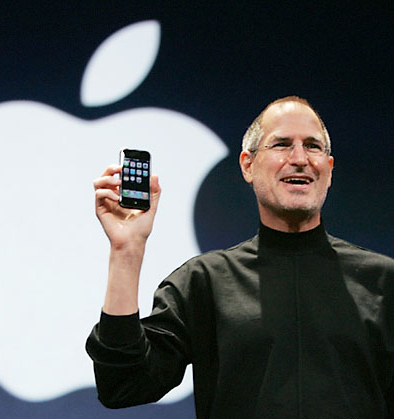Leadership Catalyst Blog

5 Keys to Overcoming the Challenges of Discontinuous Innovation
All Blog Posts, Change, Vistage Peer Groups / 20.02.2014
The past decade is littered with cases of companies who were on top of their industry one year and then suddenly found themselves struggling to stay alive. Blackberry, Borders, and Blockbuster are three that come immediately to mind. When you read about them in the media or in HBR case studies, it is hard to fathom how they missed the new technology that put them on life support, if not out of business. The phrase “discontinuous innovation” refers to a paradigm shift in technology and/or the market structure of an industry. We can learn a lot from the examples of CEOs who have successfully navigated these disruptive changes.
Minneapolis Vistage member Jay Coughlan offers some insights into why change and organizational transformation is so difficult. He has led his company, XRS through 2 major transformations since 2007, and his story is summarized in a recent Minneapolis Star Tribune article. Below is the quote from the article that provides the background story.
“In 2009 the company, then called Xata, acquired Toronto-based Turnpike Global Technologies, which provided a trucking compliance solution that ran through a handheld device. Truckers and their companies must comply with myriad regulations, from logging hours driven and duty status to tracking state fuel taxes. The XRS service also helps improve performance by keeping track of maintenance schedules, fuel economy and more.
That $20 million acquisition would be the foundation of a complete shift in the company’s approach to providing logistics for the trucking industry. Xata used to be primarily a hardware company that installed a communications dome on top of truck’s cab and then tore apart the dashboard for a four-hour installation of a fixed-panel display and keyboard.
Now, with its mobile technology, it takes about 10 minutes to connect its XRS relay device and sync it with a wide variety of Android and Windows Mobile smartphones, rugged handheld devices and tablet computers that will automatically transmit vehicle and operator data directly to a management dashboard in the cloud. “
In hindsight, this migration from hardware to mobile technology seems like a no brainer, but with discontinuous innovation, there were three powerful stakeholders that made such a transformation almost impossible.
Existing customers – XRS had a large customer base on their legacy hardware with huge sunk costs who wanted them to continue to support that system. They are less than sympathetic to the need for XRS to shift resources from supporting their legacy systems to the development of the new technology.
Shareholders and Investors – Migrating to mobile required a change in business models from a large upfront equipment sale and installation to a subscription model with no upfront revenues. Moving from one to the other means a huge decline in revenues and profits over a year or more, which translates to meager cash flow, and short term losses. Even when you forecast it on paper, it is difficult to maintain the commitment of your board and investors when you are in the middle of it, especially when there is no guarantee of long term success.
Company Leaders and Employees – Migrating from a hardware solution to a software solution, to ultimately a mobile solution required totally different skillsets in engineering, software development, and sales and was only possible with a 70% turnover of employees. Without a clear vision and a burning platform for change it is impossible to drive the changes required to support this kind of transformation.
Based on many monthly coaching sessions and CEO peer meetings with Jay, I have identified 5 Keys that enabled XRS to overcome stakeholder resistance.
- Communicating a compelling vision of the power of being a first mover in his industry with mobile technology. The message needs to be simple and re-communicated over and over to remind people where we are going.
- Creating a “burning platform” (sense of urgency) around how iPads, tablets, and smart phones were discontinuous innovations that could render their current system obsolete – XRS needed to make the leap or be left in the dust. Again, given the dramatic changes required, people need to understand and be reminded that there is no going back to the old technology.
- Developing realistic quarterly forecasts showing the revenue lines of their two platforms and when the lines would cross and then producing quarterly results that are consistent with the forecast. This is especially difficult because there is no trend data to rely on and forecasts need to be frequently updated.
- Hiring new leaders that are equipped to drive the changes required in sales, technology, and operations. These new leaders need to represent the new culture you are creating and also integrate well with the former leadership team members that are still on board.
- Identifying the three critical priorities every quarter to drive the organization through the next phase of change. These priorities can change as you encounter bumps in the road along the way, and these changes need to be clearly communicated to all stakeholders.
Jay’s leadership in overcoming stakeholder resistance during XRS period of discontinuous innovation is an excellent example of the courage and resiliency required for CEOs to lead their companies through major transformation. I really enjoy having Jay in my Vistage CEO Advisory Group and his insight is extremely valuable to other group members who may be facing a similar rocky road. Vistage provides an excellent forum for CEOs to learn from other CEOs who have been where they are going.
Read More >>

Lessons in Leadership Legacies via Peyton Manning and Shaun White
Motivation, Vistage Peer Groups / 13.02.2014
Many of us were disappointed in the quality of the 2014 Super Bowl Game, but undoubtedly none more so than Bronco’s quarterback Peyton Manning. Common sense says it’s not fair to judge a career by one event, but popular culture seems programmed to only remember the big wins and losses. The real legacy can get lost; namely the often invisible influence and impact one’s action and character had on others throughout the career.
A fan who understands what legacy is really all about out reached out to Manning through a letter in the Denver Post. Laurie Lattimore-Volkmann shares, why Manning’s legacy was secure well before Sunday’s game. Click here for the one page letter written from the perspective of a mother and a life-long Broncos fan.
Shaun White won back to back half pipe snowboarding gold medals in the Torino and Vancouver Olympics and he was the favorite coming into yesterday’s finals in Sochi. White ended up finishing just off the podium in 4th place, but he was gracious as ever in congratulating the winner. Kare11 just ran a neat story that illustrates the profound impact that Shaun White has had on a local Twin Cities boy. White’s 4th place finish in Sochi will make him no less of a hero in Jet’s eyes.
Take a moment to reflect on your legacy as a leader in your company. What would your people say about you? What one thing would you like to change starting today?
Read More >>
5 Questions to Ask to Avoid Being the Bullseye of a Data Breach
Business, Vistage Peer Groups / 11.02.2014
The hacking of 40 Million Target Shoppers over the holidays is still an unfolding travesty and other retailers like Neiman Marcus and others have likewise been affected. It’s bad enough when hackers target your system directly, but it now appears that Target was compromised by the lack of security at its VENDORS; the very people with the largest stake in Target’s success were the unwitting pathway for the criminals who stole so much personal data!
To Target’s dismay, the news broke on Friday that the vendor in question was not a giant merchandise supplier, but a small 125 person mechanical contracting firm in Pittsburgh, PA that had done some work for several Target stores. Hackers targeted the vendor’s system and its connection to Target’s vendor management system in order to gain access.
If you’re a C-Level decision maker, the blame for a vendor security breach will find its way to your desk as Gregg Steinhafel, the CEO of Target, is experiencing now. I would highly recommend taking a few minutes to read a summary of the Target breach by Vistage Speaker Mike Foster who advises Vistage CEOs across the US on how to understand and manage risky information technology aspects of their businesses. His advice may be even more critical for my Minnesota Vistage CEOs, Owner and Executive members, who have major contracts with high profile Fortune 500 companies.
 In a recent blog post, Foster highlights 5 key questions that you should be asking your IT Staff to ensure that you understand how your business is protected. Proactively asking these questions now will increase the odds that you won’t have to face angry customers asking you the same questions after it is too late.
In a recent blog post, Foster highlights 5 key questions that you should be asking your IT Staff to ensure that you understand how your business is protected. Proactively asking these questions now will increase the odds that you won’t have to face angry customers asking you the same questions after it is too late.

CEOs – Quit While You Are Ahead?
Change, Vistage Peer Groups / 07.01.2014
Long tenure is often perceived as a measure of success and a sign of CEO competence. But does the data bear this out? Not according to this INC. Magazine article “CEOs: Why You Should Quit While You’re Ahead” which offers some insightful findings about CEO tenure. The study focuses primarily on large companies but even in small to midsize privately held companies, can the CEO stay too long?
Several experts maintain that the CEO is on a steep learning curve during the first couple of years but will really hit his or her stride in years 3-5. After 5 years, however, the company’s results begin to decline. According to Michael Jarret at INSEAD, “The team’s research found that when a CEO stays over five years, customer relationships, product safety and quality, and financial returns will all decline.”
One reason for the decline is that you are more likely to settle for the status quo. “After the initial rush of enthusiasm and energy, established routines and networks can smother the drive for innovation,” Jarrett writes. A second reason for the decline is that you stop learning. “… as CEOs accumulate knowledge and become entrenched, they rely more on their internal networks for information, growing less attuned to market conditions,” the authors say.
One way to avoid this decline is suggested in the title of the article: CEOs: Why you should quit while you’re ahead. In certain situations a CEO choosing to step down may very well be the wise or heroic thing to do. On the other hand, installing a new CEO every 5 years is not practical for many companies, especially small and medium size businesses. And why would someone who has persevered through many challenges and worked hard to rise to the top leadership role want to quit?
Quitting your job as CEO will certainly bring about change for your company (for better or worse). Another path forward is to join a CEO Peer Advisory Board of independent CEOs who will continually challenge your thinking, push you out of your comfort zone, and keep you externally focused and learning.
Read More >>
5 Questions to Ask Before Joining an Executive Peer Group
All Blog Posts, Coaching, Vistage Peer Groups / 17.12.2013
CEO peer groups provide a safe place for business leaders to discuss their most challenging business problems. Not all peer groups are the same however. Here are five things to consider before joining a peer group.
1. Who chairs the meetings?
Some executive coaching groups are run by volunteers, other groups rotate meeting facilitation duties amongst themselves, and still other groups rely on paid, highly trained, business leaders to keep the meetings on track and assure all members are receiving value.
Most business leaders find that the biggest expense in belonging to a group is not the membership fees – it is the value of the time that they spend in the meetings. A professional chair can dramatically increase the value you receive from those peer meetings.
To evaluate a chair’s credentials, ask:
- What is their education and experience – not only in running a business, but in executive coaching and group facilitation?
- What national awards or recognition have they received for their chairing?
- How do they measure their own effectiveness and the effectiveness of their group?
- What do they do to continually improve their skills as a group chair?
- To what extent are they sought out as an expert by local and national media?
- What do their members say about them on their website or on LinkedIn?’
2. Is monthly individual mentoring and executive coaching included?
World-class athletes and other professionals have a coach, why shouldn’t you?
Find out if members meet monthly with their chair to dig deeper into challenges and opportunities and to make sure they are getting the very best their peer group has to offer.
3. Who else is in the group?
Make sure there are several people in the group who have been where you are going and have expertise and experience that you don’t.
- In addition to assuring there are no direct competitors in the group, attend a meeting to find out:
- Are there companies of various sizes and industries?
- Are some recognized as leaders in their industry?
- How do you feel about the chemistry of the group?
- Are members helping each other with critical issues?
- Do they challenge one another and ask the tough questions?
- Do they support one another?
- Do people seem to enjoy being there?
4. What access do you have to business expertise outside of your peer group members?
Although the interactions you have with your immediate peer group members are invaluable, CEO peer groups are more effective when additional resources enrich the experience.
Consider these questions:
- Does the group bring in great speakers?
- Is there a broader community in your city, state, country or globally that you can call on for help?
- Do they have a website to connect with other members and leading experts to get help between meetings?
5. Are there groups for their direct reports?
A key barrier to growth is having strong people beneath you so that you can elevate and delegate. Is there a way to help them grow their people in addition to themselves?
Brian L. Davis, PhD is the leading Vistage chair in Minnesota. With one of the highest-rated Vistage chair practices in the country, Mr. Davis has coached some of the top executives in the Twin Cities. Mr. Davis business leadership coaching skills have been noted by a variety of publications, including The Minneapolis Star Tribune, The Minneapolis/St. Paul Business Journal, and Entrepreneur Magazine.
Read More >>
3 Things You Need to Know About Vistage CEO Peer Groups
All Blog Posts, Vistage Peer Groups / 03.12.2013
Vistage CEO Peer Groups are a powerful resource for Minnesota business leaders.
As the leading Vistage Chair in the Twin Cities, I routinely facilitate peer groups for some of the top executives in Minnesota. Over the last year, my peer groups have been noted in a variety of publications such as The Minneapolis Star Tribune, The Minneapolis/St. Paul Business Journal, and Entrepreneur Magazine.
Despite increasing amounts of media coverage, many business leaders are still unaware of the benefits that CEO peer groups have to offer. The most frequently asked questions I encounter are:
- What is a CEO or executive peer group?
- Why do people join CEO peer groups?
- What topics do CEO peer groups cover?
The following post provides answers to those questions and guidance on finding the right peer group for you.
1) What is a CEO peer group?
A CEO peer group is a cohort of executives and owners of non-competing businesses who meet regularly to help each other grow their organizations, their people, and themselves.
These peer groups are intended to be a confidential “safe haven” where business leaders can work through their toughest strategy, leadership, and people challenges together.
Most importantly, CEO peer groups consist of experienced executives who share the frank feedback that is often so hard to obtain within one’s organization.
2) Why do people join CEO peer groups?
The members of my CEO peer groups join for a variety of reasons, both personal and professional.
Most entrepreneurs join CEO peer groups because they want to increase their effectiveness as leaders or enrich their lives – for entrepreneurs these aims are often intertwined.
For CEOs or heads of companies, many join CEO peer groups because they want to run their businesses instead of having their businesses run them. These individuals find that meeting monthly with a group of experienced, non-judgmental peers helps stop them from working “in the business” so they can focus on working “on the business” by being more strategic.
3) What topics are covered in CEO peer groups?
Vistage CEO peer groups tackle the most difficult challenges that executives face.
The topics covered in my CEO peer groups include business strategy shifts, assessing talent, and work-life balance. Often CEOs find that posing a challenge to a peer groups helps them clarify the real issue and frame their problem more accurately.
Here are some examples of issues we processed recently:
Merger Matchmaking
The CEO of $70M company was behind his revenue plan and wanted help analyzing a potential merger opportunity with a much smaller firm before taking it to his board of directors.
The group asked him a number of tough questions about the strategic fit of the target company to assure he had covered his bases before taking it to the board.
Strategic Focus
A $2M family firm felt that their sales had plateaued, and the CEO was trying to decide whether he had the right people in the sales role. Further probing by the group revealed that his sales people had been highly successful in the past, and that there were plenty of opportunities in the pipeline.
The group discussion led to the insight that sales people were spending a lot of time on opportunities that were outside of the company’s sweet spot. The group helped him better define his target customer so he could focus his sales effort there, rather than chasing opportunities that were outside of their core.
Finally, they suggested that he and his sales people go on a few joint calls to make sure they were executing good sales fundamentals, and had not developed bad habits.
Trust Issues
A relatively new CEO who had been brought in from the outside felt a need to either get an executive coach for a key member on her leadership team, who she didn’t trust. The group asked her a number of questions to help her diagnose whether the trust issues she was experiencing were a function of the person’s “character” or “capability.”
They shared their experiences with executive coaching, and suggested that while it can be highly effective in closing capability gaps, it doesn’t work when the trust issues are due to character or integrity gaps. Based on their input, she decided that she and the organization would be better off if she replaced the key executive.
Joining Executive Peer Groups
Overcome your business challenges by joining a Vistage CEO peer group.
Peer advisory groups are an important staple of the Vistage experience. My peer groups are a place for Twin Cities executives can hash out their most difficult business problems in a confidential setting.
Vistage groups have leaders from small to large companies across a range of industries, including manufacturing, finance and technology. Although Vistage members are typically accepted by referral, interested individuals can familiarize themselves with my Vistage groups to determine whether they are a good fit.
Read More >>
The Top 5 Reasons Why Minnesota Entrepreneurs Join Vistage Peer Groups
All Blog Posts, Coaching, Vistage Peer Groups / 27.11.2013
As one of the leading business coaches in the Twin Cities, I routinely hold executive peer groups featuring the state’s top CEOs and entrepreneurs.
Everyone has a unique set of motivators for joining a Vistage CEO Peer Group, but there are five reasons that I continually encounter:
1. Better business results, quicker
Most entrepreneurs didn’t go to “CEO school.”
These entrepreneurs are typically great at sales, developing innovative products, putting together deals, or they may be taking the reins of a family owned business. Regardless of how they have come to lead their businesses, most entrepreneurs are self-taught and have learned by trial-and-error.
2. Learning from failure, without failing
Failure is the best learning tool – but it doesn’t have to be your own failure.
Many entrepreneurs join Vistage peer groups because they want help making better decisions and they want to learn from the experience of others’ mistakes rather than making the same mistakes themselves.
3. Leadership Growth
Minnesota entrepreneurs that join Vistage often seek to become better leaders.
Vistage CEO peer groups have peers who will push entrepreneurs out of their comfort zones to address the business and personal challenges that are holding them back.
4. Camaraderie
Entrepreneurs often seek relief from the isolation that comes from running an organization.
It really can be lonely at the top, and entrepreneurs need a confidential sounding board with whom they can be vulnerable and discuss their failures and fears, not just their successes.
Friends and family can lend a sympathetic ear, but they usually don’t have the experience to be helpful or the perspective to help the entrepreneur see what they are doing to create a problem. An entrepreneur’s own company executives may have their own agendas or lack the courage to tell them the kind truth, and a board of directors responsible for CEO evaluation and succession is often not the first place they want to go for help.
5. Growth Acceleration
Vistage group members want access to business experts and resources that will help their businesses thrive and enhance their lives.
For example, at least six times a year, best-in-class speakers come to our meetings to do workshops on critical topics including:
- Creating a culture of alignment and accountability
- Increasing employee engagement
- Building a world-class sales organization
For specific issues, entrepreneurs can get referrals to local professional service firms who other members have used to get great results at a reasonable price.
Brian L. Davis, PhD is the leading Vistage chair in Minnesota. With one of the highest-rated Vistage chair practices in the country, Mr. Davis has coached some of the top executives in the Twin Cities. Mr. Davis business leadership coaching skills have been noted by a variety of publications, including The Minneapolis Star Tribune, The Minneapolis/St. Paul Business Journal, and Entrepreneur Magazine.
Read More >>
Predicting & Overcoming Business Growth Barriers
All Blog Posts, Business, Change, Vistage Peer Groups / 18.11.2013
I recently met with a successful entrepreneur who had grown his company to over $4.5M in revenues in just a few short years. He knew he needed a CEO Peer Advisory Board to help him take his company to the next level, but didn’t see how he could squeeze in a monthly peer group meeting in his already packed agenda.
He found himself starting work at 3:00 am to work on client projects, meeting with up to 10 customers a day, and then doing more project work in the evenings.
Like many business owners of companies with less than $5M in revenues, he was so busy selling, serving customers, and putting out fires, he felt he needed to clone himself before joining a group.
It is often said, “What got you here, won’t get you there,” and nowhere is this truism more evident than when trying to profitably grow your company.
Most entrepreneurs struggle with very predictable barriers as they grow their companies from $1M in revenues to $10M and beyond.
Read More >>
Business failure isn’t a sudden event.
Minnesota business leaders need to focus on accurate performance indicators to ensure long-term success.
Florida: December 29th, 1972
Eastern Airlines Flight 401 was a routine flight traveling from JFK Airport to Miami. As the pilots engaged the landing gear they noticed that one of the plane’s three indicator lights failed to turn on.
Not knowing whether the light was burned out or whether the landing gear had failed to lock in place, the two pilots and flight engineer focused on solving the problem.
They tried unsuccessfully to reengage the landing gear and then sent the flight engineer down below to see if he could do a visual check from a small window in the plane’s nose.
The three were so focused on fixing the problem that they failed to notice that one of them had nudged the plane’s control column with his knee, which disengaged the autopilot and sent the plane into an “imperceptible descent.”
The pilots had taken their eye off the plane’s dashboard, which had several indicators to show they were losing altitude and were in peril.
At 11:42 p.m. Flight 401 slammed into the everglades at 244 mph, killing 101 people.
How Minnesota business executives can avoid imperceptible descent
The crash of Flight 401 is not simply a tale of a blundering flight crew. The majority of business crises arise due to a similar misplacement of focus at the executive level that causes a company to slip into a disastrous imperceptible descent.
Business speaker Mike Richardson (Author of Wheelspin) recently led a discussion on imperceptible descent at my Vistage CEO Peer Advisory Group meetings, and impressed upon us the importance of keeping our eyes on the horizon and key business indicators.
In our next meeting, Vistage speaker Kraig Kramers made a compelling case that the monthly and year-to-date financial reports that most companies rely on do not give an accurate picture of what is truly happening in a business.
Financial reports typically do not control for varying month lengths and how weekends or holidays fall in a given year. This means that there could be 20% more business days from one February to the next, making for an inaccurate comparison.
The solution is to replace the typical monthly financial spreadsheets with trailing twelve month charts which plot the moving 12 month totals or averages for your key indicators.
These eliminate the “noise” caused by random monthly variation and give you a true picture of what is happening in your business (up is good, down is bad).
What business performance measures are important?
Key performance measures for a business will vary by industry. Kraig Kramers recommends starting with five fundamental measures that apply to all businesses:
- What causes sales (WCS)
- Sales growth
- Gross margin
- Operating expense net of WCS
- Operating profit
Chart these measures on a single page to get a true picture of whether your business is experiencing an imperceptible decline.
The task may appear daunting initially, but the good news is that business leaders do not have to reinvent the wheel – a spreadsheet version of this chart is available online.
The spreadsheet that Kraig provides also includes several tips to ensure that you get the most value out of it.
The members of my Vistage Peer Advisory Group have found these performance measures helpful in recalibrating how they evaluate the performance of their companies.
Brian L. Davis is the leading Vistage Chair in the Twin Cities. Learn more about his Vistage member companies here.
Read More >>When does telecommuting work well, and how can we make it more effective?
All Blog Posts, Motivation, Vistage Peer Groups / 13.03.20133 comments
 The newest occupant of the corner office at Yahoo made a tough and surprising call a couple of weeks ago when she put an end to telecommuting. Despite being new to the company and expecting her first child, Marissa Mayer has evidently taken a hard look at how things work at beleaguered Yahoo and decided the work at home option that so many of her employees had chosen may be more of a problem than a solution. Learn why columnist Anne-Marie Slaughter in her recent article in the Atlantic thinks that Marissa Mayer’s Job is to be CEO, Not Make Life Easier for Working Moms.” This article, unsurprisingly, prompted not a little controversy. (Check out the numerous comments at the end of the article for an interesting discussion.)
The newest occupant of the corner office at Yahoo made a tough and surprising call a couple of weeks ago when she put an end to telecommuting. Despite being new to the company and expecting her first child, Marissa Mayer has evidently taken a hard look at how things work at beleaguered Yahoo and decided the work at home option that so many of her employees had chosen may be more of a problem than a solution. Learn why columnist Anne-Marie Slaughter in her recent article in the Atlantic thinks that Marissa Mayer’s Job is to be CEO, Not Make Life Easier for Working Moms.” This article, unsurprisingly, prompted not a little controversy. (Check out the numerous comments at the end of the article for an interesting discussion.)
 Within a couple of days of the Yahoo announcement, Best Buy’s new CEO, Hubert Joly, made the same call by putting an end to the practice of ROWE (Results Only Work Environment) that Best Buy had popularized, and which allowed employees to work at home as long as they were achieving their objectives. The new Best Buy policy does allow for some telecommuting exceptions at management’s discretion.
Within a couple of days of the Yahoo announcement, Best Buy’s new CEO, Hubert Joly, made the same call by putting an end to the practice of ROWE (Results Only Work Environment) that Best Buy had popularized, and which allowed employees to work at home as long as they were achieving their objectives. The new Best Buy policy does allow for some telecommuting exceptions at management’s discretion.
During my one-to-one coaching sessions with my Vistage CEO Peer Group members, I have found a wide range of opinions on this. Some say this totally validates their distrust of work at home policies. Others recognize that they have scores of geographically distributed people productively working out of their homes, and that centrally locating these people is not feasible or desirable. In either case, telecommuting is probably not going away entirely, and we need to better understand in what situations it works and how we can make it more effective.
That is where you come in. So kind readers, please reply to this post with your comments.
 In your experience when has telecommuting worked well? When has it failed? What are some best practices you have put in place to make it better?
In your experience when has telecommuting worked well? When has it failed? What are some best practices you have put in place to make it better?
I am looking for your brief observations and quick stories of a paragraph or less in length. In a couple of weeks I’ll summarize your answers and add some insights of my own on how to get the most out of telecommuting. Thank you for participating!
Read More >>Focusing on Core Values Helps Vistage Member Win 2013 Specialty Retailer of the Year Award
All Blog Posts, Vistage Peer Groups / 21.01.2013
Last week I attended the 2013 Twin Cities Business award banquet for the most successful small businesses in Minnesota. I was honored to have been invited as a trusted advisor by one of the honorees, Bob Hartzell, of Chuck and Don’s Pet Food Outlet. Bob is a Charter member of one of my Vistage CEO Peer Advisory Groups, and I am proud to have him in our group. It was fun to hear how they had leveraged an initial $250 investment in one store 22 years ago, into a thriving and fast growing chain of 24 stores in Minnesota and Colorado. (Click here to read their brief success story.)
But it was even more gratifying to hear Bob’s partner, Chuck Anderson, attribute much of their success to having clearly articulated core values to guide their decisions and mold their culture. Everyone talks about values, but few know how to use them to run their business. This is something my Vistage members have focused on, and Chuck presented several examples in his acceptance speech of how it has helped fuel their success.
The three core values he highlighted were a “passion for pets,” “customers first,” and “commitment to community.” These are not just words on a website or a banner — they are core values around which they make business and hiring decisions. Here is how.
- Passion for Pets – Everyone who works at Chuck and Don’s loves animals, and over 90% of them have pets of their own. Their business cards have pictures of their own pets on them. Customers are encouraged to bring their pets into the stores and their employees know many of them by name. I have heard customers say that employees know their pets better than they do, and that they are incredibly helpful not only in helping them buy the right products, but also in solving their pets’ training or behavioral issues.
- Customers First – Employees are encouraged to spend as much time with each customer as needed to help find solutions to their problems. They log customer purchases at the cash register so that they can help other family members of the customer pick out the type of food their pet typically eats. Employees even carry out heavy bags of dog food to the car for their customers. Chuck and Don’s has a remarkable customer loyalty program that rewards their best customers with the greatest savings.
- Commitment to Community – Chuck and Don’s is an active sponsor of service dog and rescue organizations, donating over $150,000 per year. Their policy to encourage pet adoption and not sell pets in their stores is another example of their commitment to the rescue community. They also look for store locations in areas that have a strong sense of community, and I have seen them pass on high traffic locations that they felt lacked a community connection.
Congratulations Bob, on being selected as one of the most successful small businesses in Minnesota and thank you for providing such a great example of how use core values to align your organization and grow your business.
Read More >>Ten Game Changing Tips for CEO Personal Productivity
All Blog Posts, Motivation, Vistage Peer Groups / 31.05.20121 comments
As members in my CEO peer groups have been getting a grip on their business through the implementation of “Traction”, a new challenge has emerged – How to make the best use of time that was previously spent in countless meetings and in constantly fighting fires. In other words, how do they more effectively use their found time to work “ON” their business rather than “IN” their business.
 Last week we had Steve McClatchy, CEO of Alleer, help us do just that. Most of us had been through various time management programs, and understood the “importance vs urgency” distinction when prioritizing tasks.
Last week we had Steve McClatchy, CEO of Alleer, help us do just that. Most of us had been through various time management programs, and understood the “importance vs urgency” distinction when prioritizing tasks.
However, all too often, urgency trumps importance, and deadlines tend to dictate how we spend our time. This keeps us in a reactive, rather than a proactive mode, which means most of our time is spent managing or maintaining our businesses, rather than leading and improving our businesses.
Here are 10 game changing tips from Steve McClatchy:
1. There are two major categories of tasks — Gain Tasks ( “A” priorities) and Prevent Pain Tasks (“B” & “C” priorities).
“Gain Tasks” produce the greatest results in terms of achieving your goals and improving your life or business. They are things you really want to do, they are motivating, and accomplishing them is energizing and creates the feeling of balance in your life. However, you don’t have to do them, you can’t delegate them, and they are never urgent. These should be your “A” priorities. The only person that can place an “A” on your task list is you. Everyone else’s “A”s are your “B”s and “C”s
“Prevent Pain” tasks are things we “have to” do, and are maintenance tasks which keep us where we are. They will eventually all become urgent, and can burn us out. Prevent Pain tasks are “B” priorities if their results are being recorded and “C” priorities if no one else will know if we completed them or not. Delegate “have to” tasks whenever possible.
2. Intersperse your “A” tasks with your “B” and “C” tasks throughout the day.
This will help you accomplish your “A”s, energize you to accomplish your “B” and “C” tasks, and will create the feeling of balance and movement toward your goals. If you do your Prevent Pain tasks first, you will never get to your Gain tasks and will experience burnout.
3. Schedule your “A” tasks on your calendar to assure they get done.

People make decisions on how to use their time, based on their calendar, not their task list! Getting your “Gain”tasks on your calendar dramatically increases the probability that you will complete them.
4. Have one location to record all of your tasks, appointments, contacts notes and emails.
Keep it with you always, on your smartphone, tablet or PC, and get rid of all floating pieces of paper. For each task or email, touch it only once and decide to :
— Do it now if it takes less than 2 minutes
— Do it later and schedule it on your calendar or to do list.
— Don’t do it ever.
— Delegate it
5. Create daily and future to do lists using tasks in outlook, lotus notes, etc. by entering the date the task is to be started and when it is due.
This is the key to delegation, goal achievement, and stress reduction. Don’t overwhelm yourself and kill your productivity with one giant to-do list. By using an outlook task list, you can parse your master to do list into 365 daily to do lists (one for every day of the year) by simply putting in a start and completion date. Don’t waste time looking at tasks you are not going to get to today. For more ideas, go to: http://www.alleer.com/Article-TMTip1.htm
6. Keep ONE calendar!
You can still keep communication calendars (like work and home), but everything on a communication calendar needs to be on your calendar. You will save yourself an unbelievable amount of time and aggravation if you and your spouse can access one another’s calendars through outlook, google or iCalendar. Make sure everything syncs through the cloud. If you have non-compatible devices (PC/Apple) and don’t have an exchange server, you can “rent” one over the cloud for about $6/month at sherweb.com.
7. Keep great notes!
For a low tech option, keep one spiral notebook that you log all notes chronologically by date.
 Tablet computers are ideal for this purpose. The main challenge is retrieval, so keep it simple and take notes where you can always quickly find them. For example, create an outlook contact for each of your employees, and keep a running journal on all of your conversations in the notes section of each contact. You can also record performance examples there, along with topics you want to cover the next time you talk. Do the same for all of your peers, boss, customers, and even your kids.
Tablet computers are ideal for this purpose. The main challenge is retrieval, so keep it simple and take notes where you can always quickly find them. For example, create an outlook contact for each of your employees, and keep a running journal on all of your conversations in the notes section of each contact. You can also record performance examples there, along with topics you want to cover the next time you talk. Do the same for all of your peers, boss, customers, and even your kids.
There are also applications like onenote, evernote, and notes that let you take notes by date, topic and contact. The advantage with these applications is that they sync with all of your devices so that they are always accessible.
8. Become a power user of Outlook, Lotus notes, or Apple apps.
Learn to drag emails into tasks, calendar and contacts so that you have that information when you need it — When you are working on it or when you are in a meeting. You can also drag tasks into your calendar so you can easily schedule them
Turn your standard emails and templates into “signatures”. You can have over 75 different signatures that contain full emails. The advantage is that when you need to send a standard email, you can click on “new” and then right click anywhere on the signature, which will generate a drop down box with all of your signatures. Click on the one you want, change the salutation and anything else you want to customize, and then hit send.
9. Implement email protocols and best practices.
Email, while a great tool, can be an incredible personal and organizational waste of time. When you calculate all of the time it takes to set up, address, write, and edit an email, most people are only communicating at 5 – 10 words per minute. Contrast this with texting, which is 10 – 20 words per minute, Instant messaging, which is 30 – 40 words per minute, and voice mail, which is 150 – 250 words per minute.
Huge amounts of time can also be saved by having people limit their distributions lists and by not hitting “reply all” on their responses.
Finally, make sure you are managing your email, and not letting it manage you. Turn off your email new item alert window and sound — You have enough interruptions. Check it a couple of times a day, and otherwise, stay focused on accomplishing your “Gain” tasks for the day.
10. Manage interruptions to stay productive and accomplish your “Gain” tasks.
The key, says McClatchy, is to limit the interruption to the 2 minutes of actual work required by the interruption, which usually falls into 3 categories: A task someone wants you to complete, an appointment they want you to schedule, or an exchange of information. For some great tips on how to do this directly and in a way that builds rather than hurts relationships, go to Managing Interruptions.
Read More >>In the 18-minute Ted Video below, Simon Sinek presents a compelling argument that great leaders inspire action in their followers by starting with the “Why” before talking about the “How” or “What”. He illustrates his points using the inspirational examples of Apple Computer, the Wright brothers, and Martin Luther King Jr.
If you haven’t already seen it, I recommend you take 30 minutes to watch the video and then draft a “Why” statement for both your company and yourself. It is well worth the time, and one of the better TED videos that I have seen. It could significantly change your approach in communicating to employees and customers.
[youtube=http://www.youtube.com/watch?v=qp0HIF3SfI4&w=640&h=360]
Sinek says that people don’t buy what you do, they buy why you do it. A key to success as a leader is attracting followers who share your beliefs. When inspiring others to follow you or buy your product, start with “Why”.
In our March Vistage meetings, we watched and discussed this video, and all members (including me) took a stab at drafting a why statement for their businesses, and for themselves.
Here is my take on the Vistage Why, How and What statements.
 Why: Vistage is dedicated to increasing the effectiveness and enhancing the lives of Chief Executives.
Why: Vistage is dedicated to increasing the effectiveness and enhancing the lives of Chief Executives.
How: We accomplish this by helping Chief Executives become better leaders, make better decisions, and get better results.
What: We build and sustain Executive Peer Advisory Groups of chief executives from non-competing business to deliver 4 pillars of value.
- Confidential “Advisory” Peer Group Meetings that meet monthly to address key issues impacting executive decision-making and corporations;
- Private 1-to-1 Mentoring/Coaching Sessions monthly between the Vistage Chair and member executive;
- Expert resources (e.g. speakers, coaches, and “been there done that” CEOs that visit the group meetings regularly)
- Exclusive Content and On-line Connectivity to all 15,000 members and resources developed and improved for over 50 years on the proprietary Vistage Village website.
The next step is to articulate your own “Why” statement, which is more personal, and therefore, more difficult. People often ask me why I became a Vistage chair, having led a large global consulting business for many years.
The reason I became a Vistage Chair is to fulfill my core life purpose, which is to use my gifts, to do what matters, with people who care. Building, sustaining, and belonging to a community of leaders who are committed to one another’s business and personal success is more fulfilling than anything else I can imagine.
So what is your personal “Why” statement? We are looking to add a few more advisory board members that believe what we believe. If you would like to learn more about what it means to belong to an executive peer group that is committed to helping one another grow their businesses, their people, and themselves, call me at 612.877.1234.
Read More >>Some economic humor…And some serious Vistage economic predictions
All Blog Posts, Vistage Peer Groups / 13.03.2012
 As election year heats up, we keep hearing conflicting reports about the labor market’s gains from the economic recovery. At times, the arguments are reminiscent of the “Who’s on First” routine that Abbot and Costello were so famous for. Here is some of that same logic to help us understand how the number of people without jobs is going up while the unemployment rate is going down.
As election year heats up, we keep hearing conflicting reports about the labor market’s gains from the economic recovery. At times, the arguments are reminiscent of the “Who’s on First” routine that Abbot and Costello were so famous for. Here is some of that same logic to help us understand how the number of people without jobs is going up while the unemployment rate is going down.
COSTELLO: I want to talk about the unemployment rate in America.
ABBOTT: Good Subject. Terrible times. It’s 9%.
COSTELLO: That many people are out of work?
ABBOTT: No, that’s 16%.
COSTELLO: You just said 9%.
ABBOTT: 9% Unemployed.
COSTELLO: Right 9% out of work.
ABBOTT: No, that’s 16%.
COSTELLO: Okay, so it’s 16% unemployed.
ABBOTT: No, that’s 9%…
COSTELLO: Wait a minute. Is it 9% or 16%?
ABBOTT: 9% are unemployed. 16% are out of work.
COSTELLO: If you are out of work, you are unemployed.
ABBOTT: No, you can’t count the “Out of Work” as the unemployed. You
have to look for work to be unemployed.
COSTELLO: BUT THEY ARE OUT OF WORK!
ABBOTT: No, you miss my point.
COSTELLO: What point?
ABBOTT: Someone who doesn’t look for work, can’t be counted with
those who look for work. It wouldn’t be fair.
COSTELLO: To whom?
ABBOTT: The unemployed.
COSTELLO: But they are ALL out of work.
ABBOTT: No, the unemployed are actively looking for work. Those who
are out of work stopped looking. They gave up. And, if you give up,
you are no longer in the ranks of the unemployed.
COSTELLO: So if you’re off the unemployment rolls, that would count
as less unemployment?
ABBOTT: Unemployment would go down. Absolutely!
COSTELLO: The unemployment just goes down because you don’t look for work?
ABBOTT: Absolutely it goes down. That’s how you get to 9%.
Otherwise it would be 16%. You don’t want to read about 16%
unemployment do ya?
COSTELLO: That would be frightening.
ABBOTT: Absolutely.
COSTELLO: Wait, I got a question for you. That means they’re two
ways to bring down the unemployment number?
ABBOTT: Two ways is correct.
COSTELLO: Unemployment can go down if someone gets a job?
ABBOTT: Correct.
COSTELLO: And unemployment can also go down if you stop looking for a job?
ABBOTT: Bingo.
COSTELLO: So there are two ways to bring unemployment down, and the
easier of the two is to just stop looking for work.
ABBOTT: Now you’re thinking like an economist.
COSTELLO: I don’t even know what I just said!
And now you know why unemployment figures are improving!
For a more serious treatment of the issue, watch this 8 minute video by Brian Westbury, chief economist at First Trust.
[youtube=http://www.youtube.com/watch?v=fS_LpEs-4Uo&w=480&h=360]
Brian points out that over the last several decades, the official unemployment rate, (currently 8.3 %) is almost perfectly correlated with the jobless rate (aka The U-6 Index) which is currently 15%. Mathematically, the U-6 index is consistently 1.8 times the official unemployment number, and since that ratio has not changed, the gap between the two is not increasing because more people have simply stopped looking for a job. He does suggest that the gap may widen with the aging of our population as the percentage of people over age 60 who want to remain increases.
While we can debate how to best measure unemployment, a couple of facts are evident:
1. The U.S. added more than 200,000 jobs for the third consecutive month. (WSJ – 3/10/2012)
 2. This job growth was predicted by the Vistage Q4 2011 CEO Confidence Index at the end of last year. Here is a quick summary of those results.
2. This job growth was predicted by the Vistage Q4 2011 CEO Confidence Index at the end of last year. Here is a quick summary of those results.
Vistage members were not only more optimistic about prospects for the national economy, but also about the outlook for their own firm’s performance during the year ahead. The Vistage CEO Confidence Index was 98.8 in the fourth quarter 2011 survey, up from 83.5 in the third quarter and reaching the highest level since the start of 2011 (105.2).
Below are some key highlights from the Q4 Vistage CEO Confidence Index:
- 41% of CEOs recognized improved economic conditions over the previous 12 months, up from just 18% in the Q3 survey.
- Only 12% of CEOs thought the economy had recently worsened.
- 73% of CEOs expected revenue growth.
- 55% of CEOs said they plan to increase the number of their employees over the next 12 months, compared with 46% in the Q3 survey.
- 43% of CEOs said the European debt crisis impacts their business.
- 24% of CEOs are finding it easier to obtain credit for their business today compared to 6 months ago.
- 49% of CEOs believe Mitt Romney will emerge as the Republican Presidential Nominee for 2012, while 29% believe it will be Newt Gingrich.
The Vistage CEO index has become a very reliable and accurate predictor for the economy and job growth 2 quarters out. Having these insights into the future provides a competitive advantage to Vistage member companies, and is one of the many reasons that they consistently outperform their non-member peers.
The Q1 2012 CEO confidence index is currently being compiled, and I will post an update in early April
Read More >>CEOs in my Vistage Peer Group candidly reveal the impact the group has had on their businesses
All Blog Posts, Vistage Peer Groups / 13.02.2012
A little over a year ago, I submitted a post citing research that Vistage CEOs outperformed their non-member peers. (http://theleadershipcatalyst.wordpress.com/2010/10/31/research-backs-claims-that-vistage-ceos-outperform-their-nonmember-peers). The bottom line of that article was that
“… in one of the toughest economies in history, Vistage member companies averaged 5.8 % revenue growth, while nonmembers averaged a (9.2%) revenue decline. In future posts, we will explore the factors that contribute to that sizeable performance difference.”
The purpose of today’s post is to make good on that promise. Most of the CEOs who have been in the Vistage Peer Group that I chair have seen significant improvements in their business since they joined. Our group currently has 18 members from a diverse set of industries and backgrounds and businesses that range in size from $5M to over $800M in annual revenues. To better understand how belonging to Vistage increased their effectiveness and enhanced their lives, I took a little flip camera to one of our monthly executive coaching sessions and asked them. (To see all 12 videos, click on the CEO VIDEOS tab at the top of the page.)
For purposes of this blog post, I selected the responses of 3 CEOs from varying company sizes, industries, and business models. Some were struggling a year ago, and others were doing well. All are doing better now and point to their Vistage membership as a key factor in their successes. Below is a brief outline of their situations and links to their 2 minute YouTube videos where they share how Vistage made a difference.
Gene Earhart is the CEO of Wellington Security Systems, a small family business (< $5M) he owns and operates in partnership with his brother-in-law. Gene is a lifelong entrepreneur, who decided to start this business with his family before finishing college. His company designs, installs, and services electronic security systems for the commercial market, and they have 10 employees in a single location. He credits Vistage with helping him turnaround his company to achieve the most profitable year in their 30-year history.
Click here to see a 2 minute YouTube video of Gene telling his story.
Mike Martin is the CEO and owner of Carlson & Stewart Refrigeration ($10 – $25M), which designs, installs, and services industrial and commercial refrigeration systems. An engineer by training, he has worked most of his career at his company, and bought it and became CEO about 8 years ago. Based in Marshall MN, he has about 50 employees in 3 locations in Minnesota and South Dakota. He says that he would not have been able to double the size of his business last year without Vistage.
See Mike’s 2 minute YouTube video by clicking here.
Jim Fisher is the CEO of Midwest Sign, a privately owned business ($100M+) that distributes sign making equipment and supplies. They have about 200 employees in 9 locations throughout the western half of the U.S.. Jim is trained as an accountant, and has spent most of his Career with Midwest. He was thrust into the CEO position about 5 years ago with the sudden and unexpected death of the beloved company owner and founder. After being pounded by the recession, he and his team have hit the restart button on their growth engine, and last year they achieved double-digit growth and record profitability. He points to Vistage as helping him become more strategic, getting him more on top of the business, and showing him how to get a lot more done in less time.
Click here to see more about how Vistage has helped Jim elevate his game as a CEO.
A key theme that cuts across all of these stories is that “None of us is as smart as all of us”. Having an advisory board of fellow CEOs that have your back and challenge your thinking is a tremendous competitive advantage.
Read More >>How to Increase Accountability
All Blog Posts, Coaching, Performance Management, Vistage Peer Groups / 22.11.20111 comments
In a recent Vistage meeting, a theme that emerged was how to better hold others accountable. People often agree in meetings to things with “their fingers crossed”, and don’t deliver on commitments. While this is the subject of many books and training programs, one quick fix is to assure that you have a “Level 5” agreement.
James Newton, CEO of Newton Learning corporation and longtime Vistage Speaker, outlines 5 levels of agreement. Below is a brief description of each agreement level, illustrated by a simple example of setting up a golf game. As you read the scenarios, consider the level of agreement you have achieved in those instances where people have not delivered on commitments.
Level 1 Agreement: No agreement at all.
Brian: “Hey Mike, what do you say we play golf after our next meeting.”
Mike: “There’s an idea.”
Level 2 Agreement: Likes the idea, but no agreement.
Brian: “Hey Mike, let’s play golf after our next meeting.”
Mike: “Good idea!”
Level 3 Agreement: Reluctant agreement–but no commitment to do anything.
Brian: “Mike, Let’s play golf after our next meeting.”
Mike: “Man, I am really swamped, I better not.”
Brian: “Come on Mike, this will probably be our last chance before snowfall.”
Mike: “OK, I’m in.”
Level 4 Agreement: Enthusiastic agreement–but no commitment to do anything.
Brian: “Mike, let’s play golf after our next meeting”
Mike: “Great idea! Count me in.”
Level 5 Agreement: Specific commitment of who is going to do what by when, stated by the accountable person.
Brian: “Mike, let’s play golf after our next meeting”
Mike: “Great idea!” I’m in.”
Brian: “Where do you want to play.”
Mike: “Let’s play at my club. I’ll make a tee time for after our meeting.”
Brian: “How about if we have our meeting at your club so we can tee off right after that.”
Mike: “Great, I’ll meet you at my club for our monthly one-to-one on Friday at 2:00 pm and make a tee time for 3:30 pm.”
♦♦♦♦♦♦♦♦♦♦♦♦♦♦♦♦♦♦♦♦♦♦♦♦♦♦♦♦♦♦♦♦♦♦♦♦ LEADERSHIP CATALYST TIP ♦♦♦♦♦♦♦♦♦♦♦♦♦♦♦♦♦♦♦♦♦♦♦♦♦♦♦♦♦♦♦♦♦♦♦
Accountability increases with the level of agreement. If you are having trouble holding people accountable, push for a Level 5 Agreement, with a specific commitment to what is going to get done, by whom, and by when that is stated by the accountable person. It may take a little longer, but it will increase accountability and execution–and will save you a lot of time in the long run.
♦♦♦♦♦♦♦♦♦♦♦♦♦♦♦♦♦♦♦♦♦♦♦♦♦♦♦♦♦♦♦♦♦♦♦♦♦♦♦♦♦♦♦♦♦♦♦♦♦♦♦♦♦♦♦♦♦♦♦♦♦♦♦♦♦♦♦♦♦♦♦♦♦♦♦♦♦♦♦♦♦♦♦♦♦♦♦♦♦♦♦♦♦♦♦♦♦♦♦♦
Is your business model dying? How do you know?
All Blog Posts, Business, Strategy, Vistage Peer Groups / 30.10.2011
- Why did XEROX give the mouse and “windows” technology to APPLE?
- Why didn’t AT&T invent SKYPE?
- Why didn’t MICROSOFT invent GOOGLE?
- Why didn’t BLOCKBUSTER invent NETFLIX?
- What changes have you made to your business model in the last couple of years?
- If an employee came to you with a “game changing” idea that might threaten your core business in the short term, would you listen to them?
- Is your business model dying, how do you know?
A Death in Cupertino | The Right Kind of Tyrant
All Blog Posts, Motivation, Vistage Peer Groups / 11.10.2011
“ Remembering that I’ll be dead soon is the most important tool I’ve ever encountered to help me make the big choices in life; because almost everything —all external expectations, all pride, all fear of embarrassment or failure — these things just fall away in the face of death, leaving only what is truly important. Remembering that you are going to die is the best way I know to avoid the trap of thinking you have something to lose.
You are already naked. There is no reason not to follow your heart.”
Steve Jobs
1955-2011
Founder and CEO of Apple
From his Stanford University Commencement Address, 2005
Picking an article to share with you about the passing of Steve Jobs is an impossible task with so many that knew him sharing their impressions on one of the most important entrepreneurs in history.
We have a saying in Vistage: “We invite CEOs to our group but human beings show up.” To get a sense of what was important to this truly remarkable and essestial human being, I’d like to share with you the 15 minute video of his 2005 Stanford Commencement speech. I found it incredibly inspirational, and I hope you will share it with your friends, family and employees.
This inspiring speech, however, should not blind us to the fact that Steve Job’s management style was often very different from the warm, fuzzy and friendly feeling you get from using his products or visiting the Apple store at the mall. For some insights into the management style that made Apple the most valuable company in America, check out this article which suggests that if Steve Jobs was often a hard man to work for, he was, in fact, “The Right Kind of Tyrant.”
Thanks, Steve, for all you have given us. Rest in Peace
Numerous articles have been written about the resignation this past week of Steve Jobs as CEO of Apple (though he remains as chairman). I could list a dozen that I find compelling and you can easily find them online or elsewhere. It would be difficult to find one that does not celebrate his many successes. Fortunately, I found one that focuses on his many failures…and how they were indispensible to his breathtaking successes. Check out “Steve Jobs: America’s Greatest Failure” ; required reading for any entrepreneur….or those who manage one.
Read More >>Why I Admire CEOs of Small, Privately Held Companies
All Blog Posts, Vistage Peer Groups / 04.02.2011
Recently I attended a 30th anniversary celebration honoring 3 colleagues from my former company, PDI Ninth House. Like me, they had spent most of their careers working with Global 1000 firms all over the world. We shared memories of jet setting around the globe, working with top executives at major companies throughout the US, Asia, Europe, and the Middle East.
People were naturally curious about why, with all of my Global 1000 Company experience, I preferred to work with CEOs of small privately held companies. The short answer to that question is that I admire their courage and their total commitment to the success of their business and their people.
Jay Goltz expands upon this point in a New York Times article entitled “There are Two Kinds of CEOs” that appeared February 2, 2011. The article features a conversation between the writer and Rafael Pastor, the chairman and chief executive of Vistage, a leading organization of chief executives. They agreed that one of the biggest differences between CEOs of big public companies and CEOs who run small privately held companies is how connected the CEO is to the success of the business. While CEOs of both types of companies have significant upside consequences, the consequences of a business downturn are far more severe for the small private company CEO.
As Jay Goltz explains:
“When things get tough, instead of getting multimillion-dollar payouts to quit, many small-company C.E.O.’s are compelled to put even more money into the business. Mr. Pastor of Vistage recently polled the organization’s members on this question: “During this economic downturn, did you at any time pledge personal assets or invest personal money into your company to help weather the storm?” Forty-six percent said yes.
To many, betting the house may seem an insane risk to take. And maybe it is. But if small-business owners weren’t willing to take that risk, there would be far fewer small businesses in America. You see, many entrepreneurs are what I would call “all in”: all of their money, most of their time, and most of their ego and self worth and pride are involved. Sometimes they put too much in, at the expense of their families and general well-being.
But the fact is that when small company chief executives fail, they often face dire consequences. And that’s an aspect of business ownership that is rarely noted in the glamorized view of entrepreneurship that we frequently see portrayed. Nor is it fully understood by public officials who always seem eager to have small businesses borrow more aggressively and hire more aggressively.”
Read More >>








